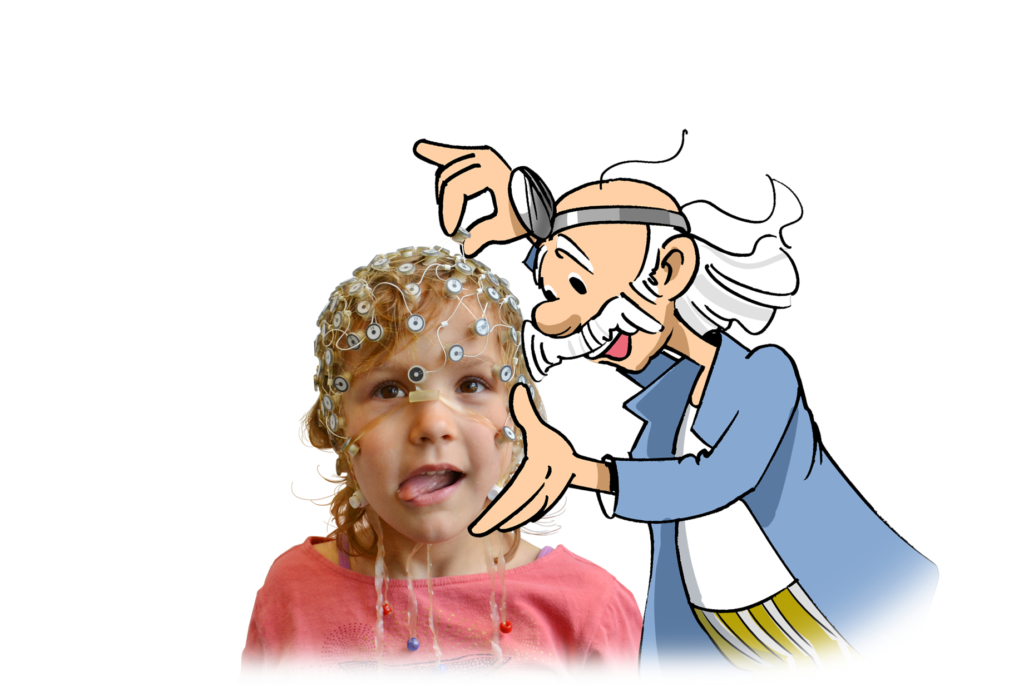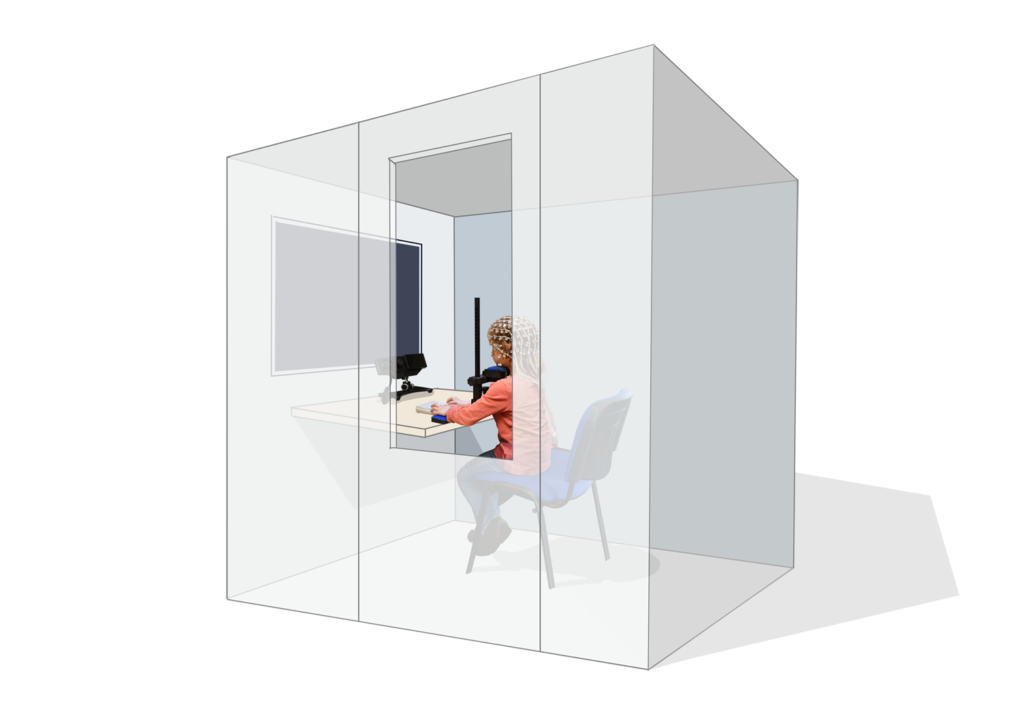EEG
What is EEG?
Electroencephalography (EEG) is a method used to record the electrical activity of the brain. It measures tiny fluctuations in electrical voltage on the scalp with millisecond precision. This allows researchers to draw conclusions about underlying perception and thinking processes.
What happens during the study?

During the EEG measurement, your child will wear an elastic cap on their head, which has up to 64 electrodes attached. Small amounts of electrolyte gel are used to increase the electrical conductivity between the scalp and the electrodes. This gel is very skin-friendly and can be easily washed out with shampoo after the measurement. We provide a large sink with a warm water shower head, various shampoos, towels, and a hairdryer.

During the EEG measurement, your child will work on tasks that are presented on a screen, via loudspeakers, or via headphones. The voltage changes measured on the scalp are very small and external sources like radio, mobile phone, or wireless signals could interfere with the recordings; therefore, measurements take place in an electromagnetically shielded cabin. Since movements can affect the quality of the measurement, it may be helpful (depending on the study’s requirements) for your child to rest their chin on a padded support during the EEG recordings.
What to keep in mind when participating?
- Hair should preferably not be washed right before the EEG recording.
- Also avoid using creams, makeup, or other cosmetic products on the child’s face before the EEG recording.
- Any factors that may affect your child’s participation (e.g., fatigue or stress) should be communicated to the researchers.